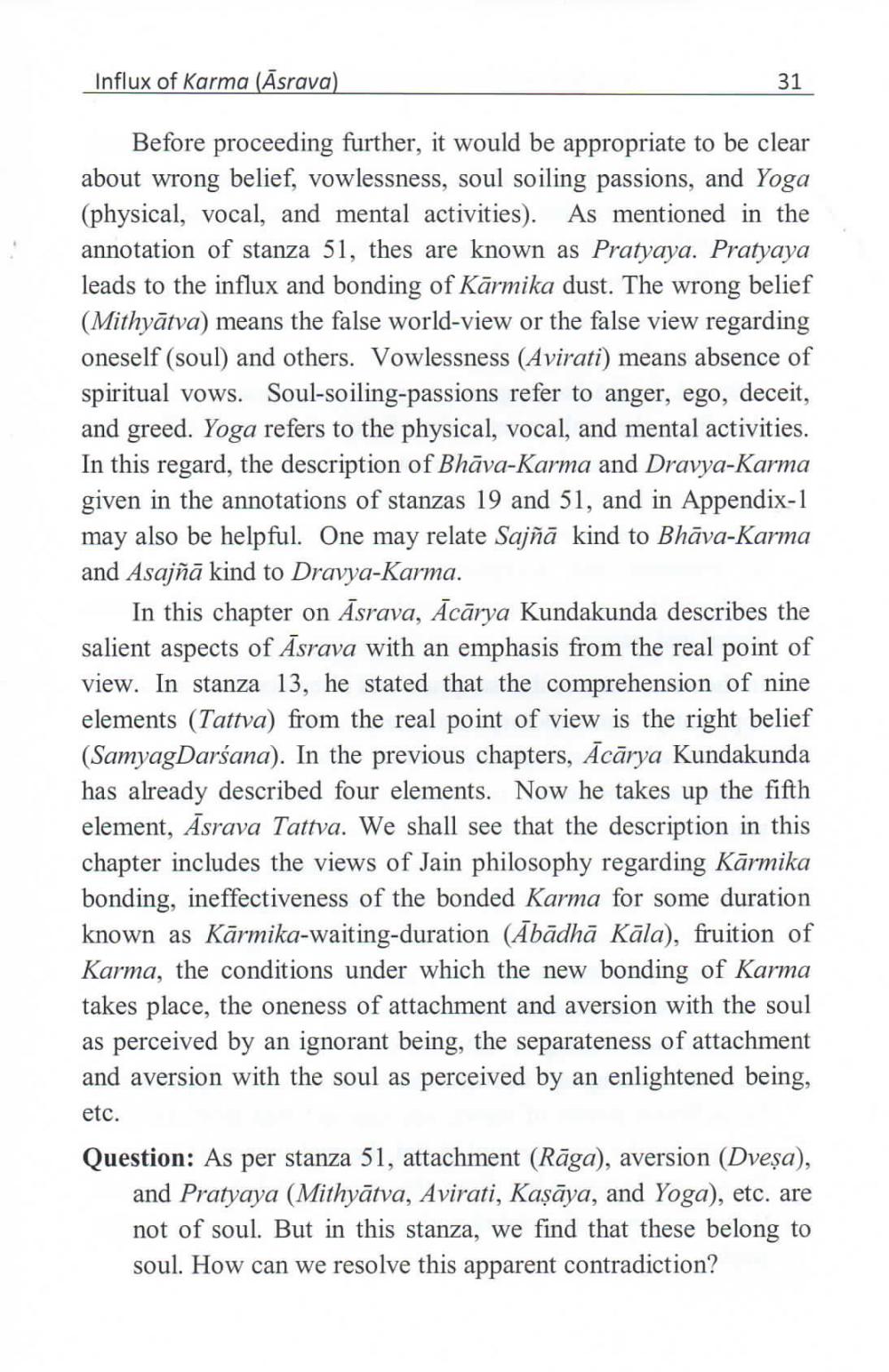________________
Influx of Karma (Asrava).
31
Before proceeding further, it would be appropriate to be clear about wrong belief, vowlessness, soul soiling passions, and Yoga (physical, vocal, and mental activities). As mentioned in the annotation of stanza 51, thes are known as Pratyaya. Pratyaya leads to the influx and bonding of Kārmika dust. The wrong belief (Mithyātva) means the false world-view or the false view regarding oneself (soul) and others. Vowlessness (Avirati) means absence of spiritual vows. Soul-soiling-passions refer to anger, ego, deceit, and greed. Yoga refers to the physical, vocal, and mental activities. In this regard, the description of Bhāva-Karma and Dravya-Karma given in the annotations of stanzas 19 and 51, and in Appendix-1 may also be helpful. One may relate Sajñā kind to Bhāva-Karma and Asajñā kind to Dravya-Karma.
In this chapter on Āsrava, Ācārya Kundakunda describes the salient aspects of Āsrava with an emphasis from the real point of view. In stanza 13, he stated that the comprehension of nine elements (Tattva) from the real point of view is the right belief (SamyagDarśana). In the previous chapters, Ācārya Kundakunda has already described four elements. Now he takes up the fifth element, Asrava Tattva. We shall see that the description in this chapter includes the views of Jain philosophy regarding Kārmika bonding, ineffectiveness of the bonded Karma for some duration known as Kārmika-waiting-duration (Ābādhā Kāla), fruition of Karma, the conditions under which the new bonding of Karma takes place, the oneness of attachment and aversion with the soul as perceived by an ignorant being, the separateness of attachment and aversion with the soul as perceived by an enlightened being, etc. Question: As per stanza 51, attachment (Rāga), aversion (Dveșa),
and Pratyaya (Mithyātva, Avirati, Kaşāya, and Yoga), etc. are not of soul. But in this stanza, we find that these belong to soul. How can we resolve this apparent contradiction?




